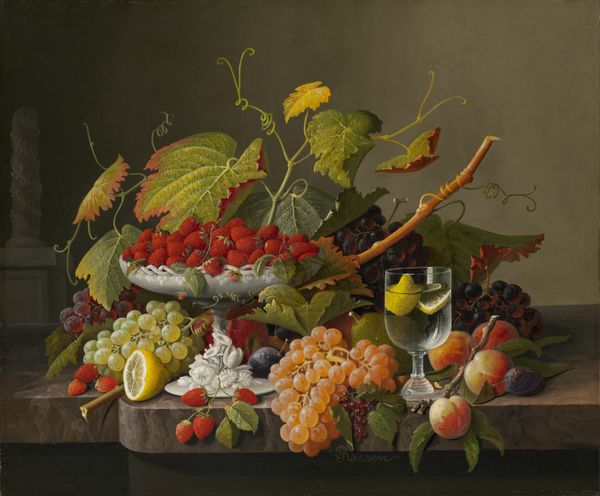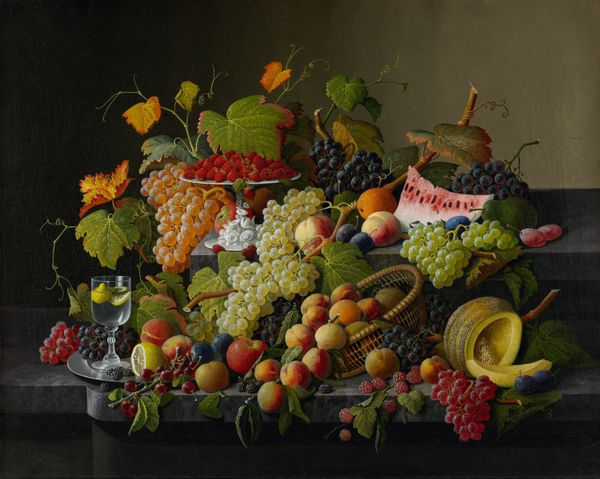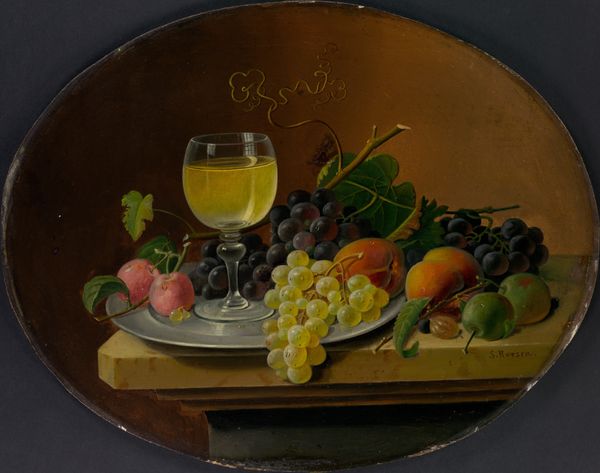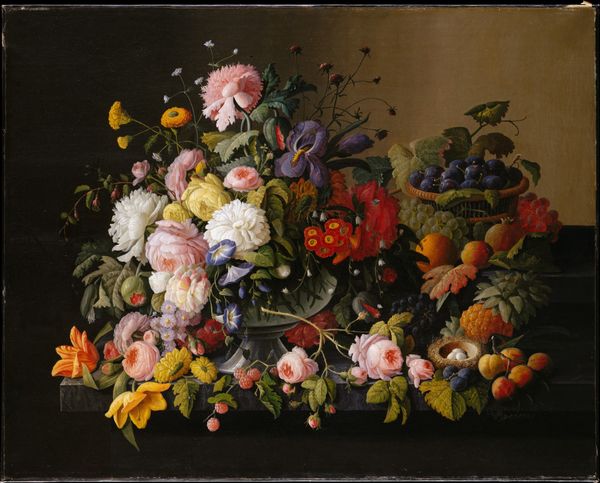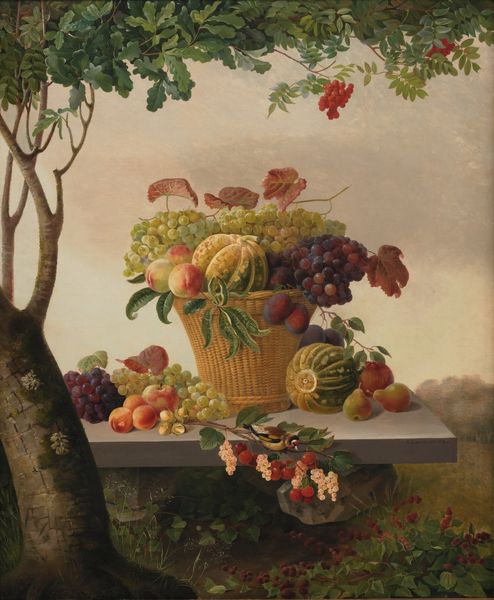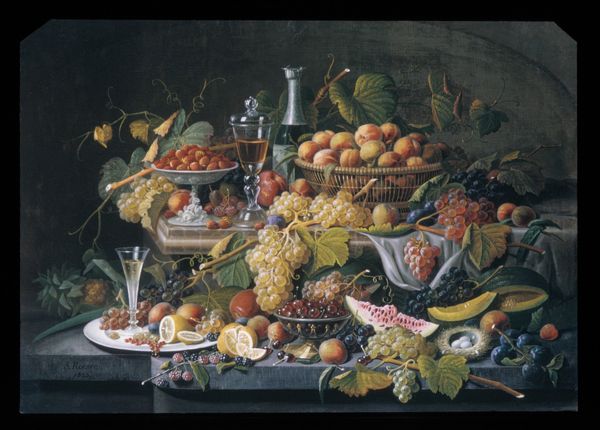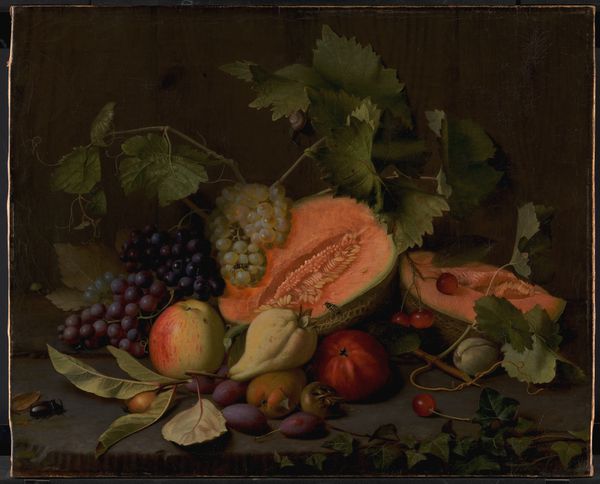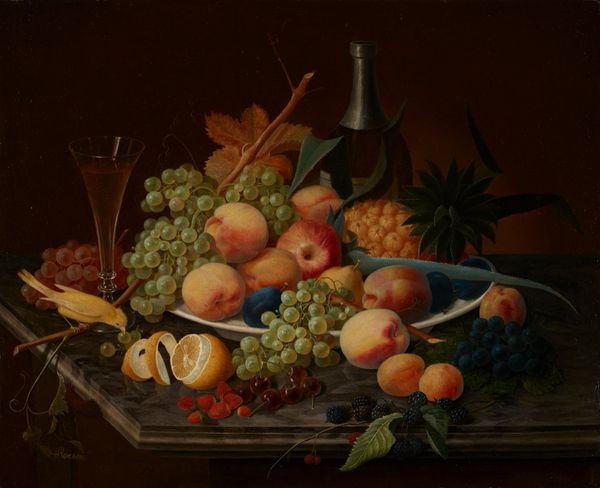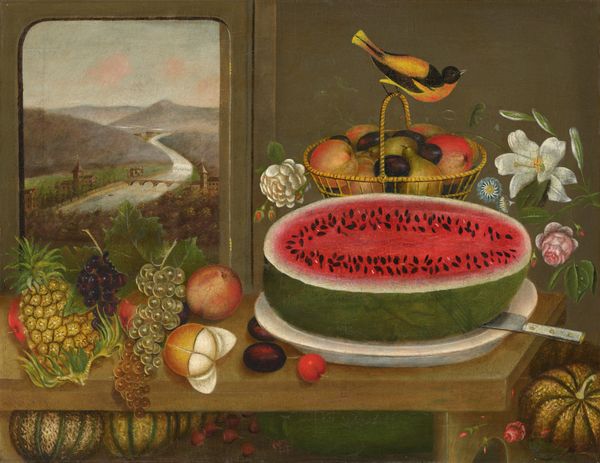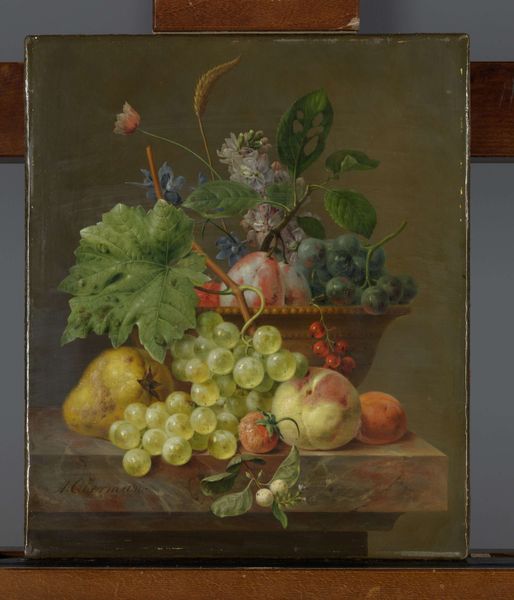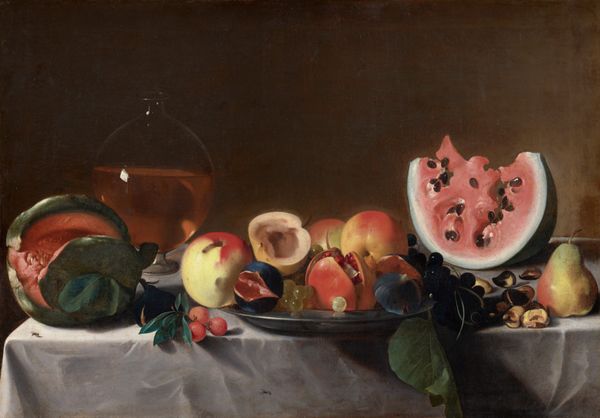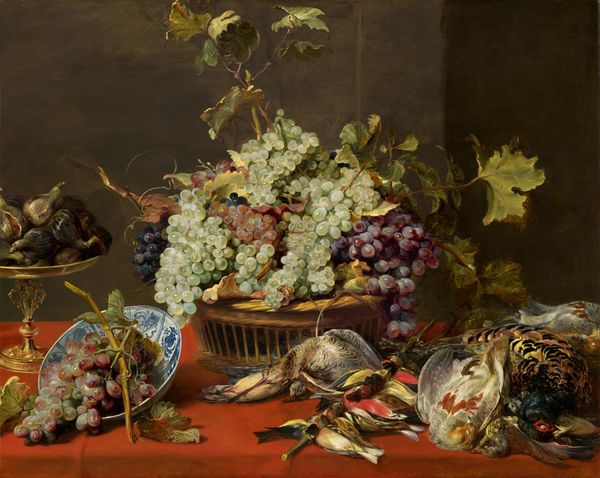
Still Life with Strawberries in a Compote 1865 - 1870
0:00
0:00
Dimensions: Oval: 16 x 20 in. (40.6 x 50.8 cm)
Copyright: Public Domain
Curator: This painting, dating from about 1865 to 1870, is titled "Still Life with Strawberries in a Compote." It was crafted by Severin Roesen. Editor: My eye immediately goes to the compote itself. That striking white against the darker background creates a striking sense of depth and, dare I say, luxury? Curator: Yes, it’s a carefully constructed image of abundance, reflective of the era's growing consumer culture. Consider the symbolic value—these displays of fruit not only represent prosperity but also reinforced notions of domestic harmony. The earthenware and the ceramic support that reading. Editor: The sheer detail given to the rendering of the various fruits suggests a keen attention to the materiality of food itself, the way light interacts with the surfaces. Do you see a nod here to the rise of consumerism impacting even seemingly pastoral genres? Curator: Certainly. Roesen was working in a period where advancements in transportation and preservation meant a wider variety of goods became available. His paintings tap into this burgeoning market, showcasing attainable luxuries to an aspirational middle class. Think of it as still life entering its marketing era. Editor: And he highlights this through careful observation of how these everyday fruits and table wares appear and feel, really diving into a process that challenges hierarchies. It seems to imply no subject is beneath attention, elevating common materials by the meticulous nature of its production as a painting. What do you make of that presentation? Curator: Precisely. Roesen's choice of presenting the fruit within reach on what appears to be a simple stone surface, framed against an undefined backdrop, allows viewers to focus entirely on the still-life objects—it's a way of isolating them and imbuing them with significance beyond their everyday function. He draws attention to the role of the market in defining the painting. Editor: It almost begs the question: What stories can such commonplace arrangements tell when subjected to focused creation? It's wonderful to examine this piece within this social setting and see Roesen’s contribution to its story, in light of labor and his material interactions. Curator: I concur entirely. Exploring the social conditions informing these artistic choices gives depth and pertinence to even seemingly static artworks like this one.
Comments
No comments
Be the first to comment and join the conversation on the ultimate creative platform.
